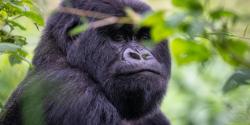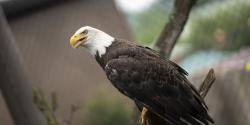The Tasmanian devil is the largest living carnivorous marsupial.
Due to its chilling nighttime screeches, early European settlers gave Sarcophilus harrisii the common name of Tasmanian devil. Sarcophilus means 'flesh-loving,' referring to the species' primary food source of carcasses (dead animals); harrisii after George Harris, the naturalist who wrote the first published description of the Tasmanian devil in 1807.
Located in Australia & the Islands
Scientific Name: Sarcophilus harrisii
Conservation Status: Endangered
Size: 20 to 31 inches in length; 10 to 12 inches in height
Weight: 8 to 26 lbs.
Median Life Expectancy: Unknown















